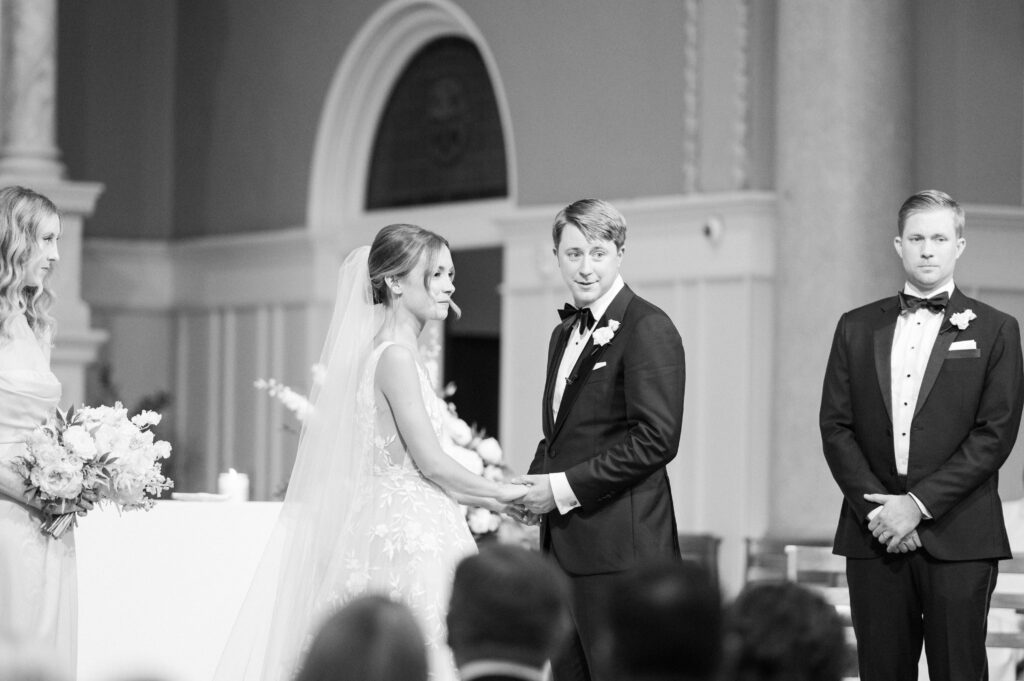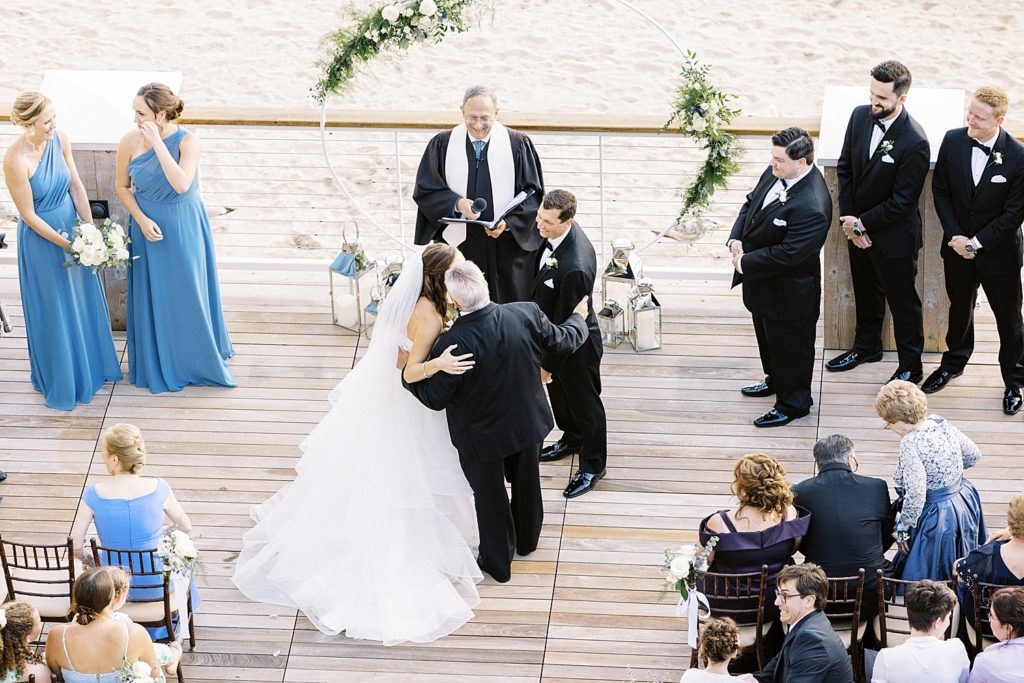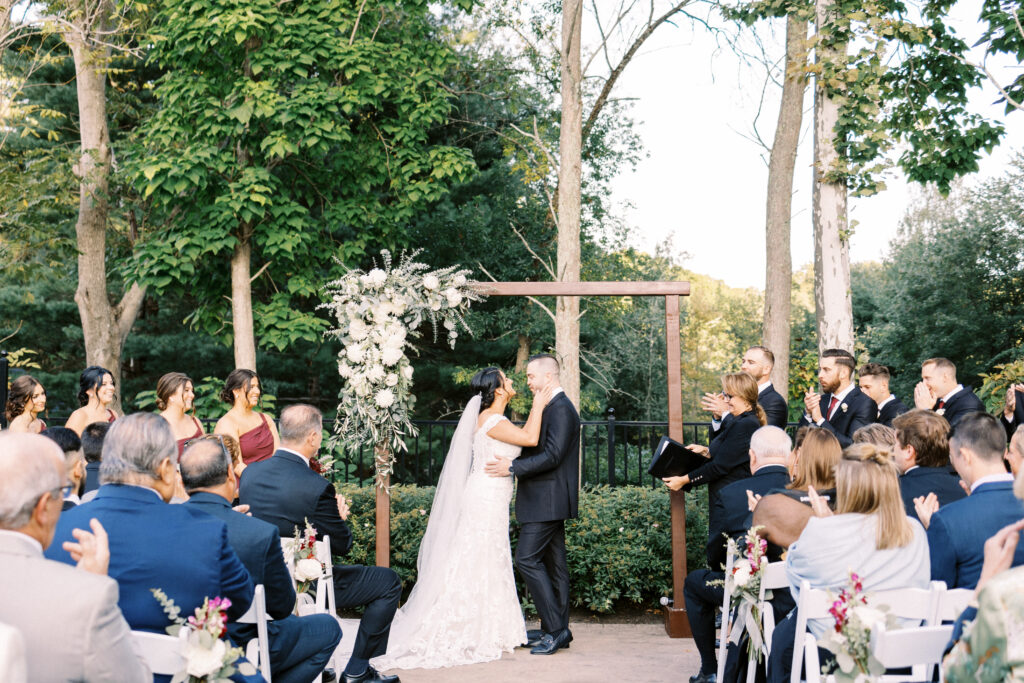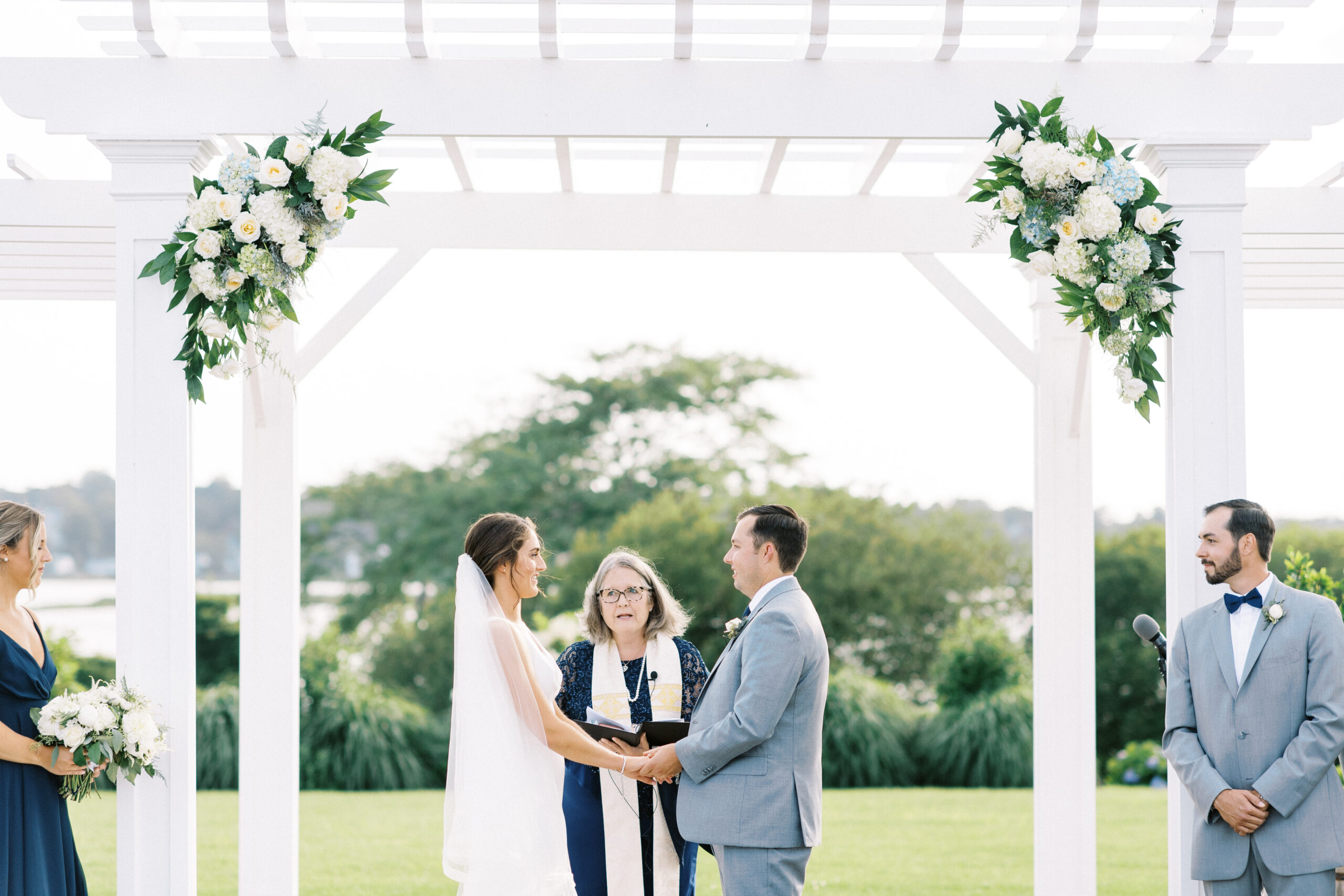There are lots of things to consider as you set your wedding day schedule, and choosing your ceremony time is arguably the most important factor. When I hop on a timeline planning call with my couples months before their wedding date, I’ll start by asking when the ceremony is. That’s because we’ll backwards plan the entire start of the wedding day around when the ceremony is set to take place.
To ensure your day goes off without a hitch and happens that way you envision it, there are a few essential pieces to keep in mind as you set your ceremony time:
Location Matters When Setting Your Ceremony Time
If the ceremony is taking place on site at the reception venue, then you will likely will have a window of time to work with that’s just an hour or two prior to the start of your reception. If you have a religious ceremony, you’ll often need to plan for a mid-day ceremony with a longer gap between the ceremony and reception due to restrictions from the religious institution. Keeping these restrictions in mind is the first step. You’ll also want to factor in travel time and traffic between the ceremony and reception locations.

Sunset Matters When Choosing Your Ceremony Time
Knowing exactly when sunset is, is another essential piece of the puzzle when choosing your ceremony time. Beyond the exact time of the sunset, ask your planner about venue-specific characteristics that may cause the sun to dip earlier than expected. For example, if you’re celebrating in the heart of the city, the surrounding sky scrapers will block the sun much earlier than the actual sunset time. You want to ensure you leave enough time for portraits in natural light after the ceremony. And you want to think about your guest experience for cocktail hour, too. If you want people to enjoy cocktail hour outside, it’s a good idea to plan for your ceremony to end with 75-90 minutes of daylight left. Quickly look up your wedding day sunset time here!

First Look v. No First Look Impacts Your Wedding Ceremony Time
Finally, you’ll need to decide on whether or not you’ll do a first look. First looks allow you to have a private reveal and take formal portraits prior to the ceremony. This often includes wedding party and immediate family combinations, allowing you to make the most of the natural light during the day, and then spend cocktail hour with your guests. It also means you don’t need as much daylight after the ceremony, and you could even plan a sunset ceremony for golden hour photos.
If you’re a couple who really wants the traditional reveal moment at the head of the aisle during the ceremony, then you’ll decide against a first look. If you don’t do a first look, you’ll need more time after the ceremony for portraits in natural light before the sun goes down – ideally about 90-120 minutes of daylight.

When choosing your ceremony time, there are several factors to consider, but these three should top your list. And if you’re still on the fence about a first look, you’ll want to give this post a read to help you decide what is right for you!

comments